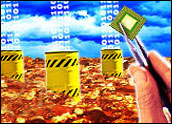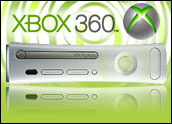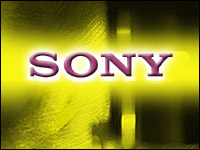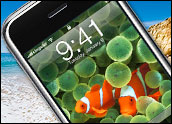
The hottest gadgets of today will look old and tired a year from now. Sellers of mobile handsets, smartphones, MP3 players, gaming consoles, camcorders, digital cameras and laptops constantly push the latest and greatest technology, leaving yesterday’s choice items in the dust.
Then there’s the fact that this stuff is pretty easily broken.
How to dispose of broken or outdated electronic devices has become a growing question.
A year-old startup, BuyMyTronics.com, thinks it has an equitable and environmentally friendly solution: It will buy anyone’s used, new and broken devices. It will fix what’s fixable and sell it at profit. The rest gets recycled.
“Everybody has something they [just don’t know what to do with]. It’s happened to me before. I broke a digital camera, and when I looked for a place to have it fixed, it was going to be more to fix it than it was to buy a brand new one,” said Brett Mosley, president and CEO of BuyMyTronics.com.
Although many people have found themselves in a similar position, holding a worthless device because it is broken or out-of-date, Mosley decided he would do something about it.
“I’d always had that idea that it would be cool if you could buy things from people at a reasonable price and then have all of your labor and repairs done in-house. You could sell them. It was always something I had been frustrated with and said, ‘someone should do something about this.’ The opportunity presented itself and I seized the day,” he said.
A Salvage Operation
For what Mosley calls a “reasonable price,” BuyMyTronics will purchase certain types of electronics from numerous vendors, including Apple iPods, Blackberry smartphones and Sony PlayStation gaming consoles, among many more.
iPhone bricked? BuyMyTronics wants it. Recently upgraded to an iPod touch and you need to move an older model? The firm will buy that too.
“A pretty popular model [cell phone], the Motorola V3, we pay up to (US)$35 for a used one. For a broken iPhone, we pay up to $200 for one of those. A used BlackBerry Pearl, we pay up to $200. A used iPod video — not this current generation but the one before it — we pay up to $160. A used mini iPod, up to $37, and a broken nano is up to $51. We pay up to $292 for a Nintendo Wii,” Mosley explained.
The response to the site has been excellent, he told the E-Commerce Times.
“We’ve been up and running for about a year now, and month over month we’ve been growing at 30 percent,” he pointed out.
Business has been good enough for Mosley to expand the list of electronics he will purchase to include Apple laptops. PC laptops will be added in the future.
“On laptops, we’ll be paying up to $2,000. We’ll pay pretty well for broken and used,” he said.
Greenish Tint
Whatever the condition of the device, Mosley said, his company will pay consumers for it. If it’s not fixable and resellable, once the device has been stripped of serviceable parts, the remainder — which often includes components composed of toxic elements — will be responsibly recycled, not sent to a local landfill.
“I’m paying people to recycle, essentially. I’m actually paying really good money, and the concept sells really well with people,” he noted.
The green effect does not stop there. The business is 100 percent wind powered, according to Mosley, and by salvaging reusable parts from old and broken devices, BuyMyTronics reduces the number of new components that will need to be manufactured. Refurbishing salvageable devices and selling them to larger retailers and through an eBay site also achieves this goal.
The tech waste problem is massive, Sarah Westervel, e-Waste project coordinator at the Basel Action Network (BAN), told the E-Commerce Times.
“One of the things that’s really mind-blowing … to go into a U.S. recycler’s warehouse that maybe is 80,000 to 100,000 square feet and see nothing but electronic waste,” she said.
The BAN works for the responsible disposal and recycling of toxic waste, of which electronic devices are a significant and constantly growing percentage. The danger to the environment is that many of these products contain lead, cadmium, chromium and other toxic substances.
“Not only are they carcinogens, but there are tetratogens, which cause problems to fetuses. They can affect the endocrine system, the whole hormone system, and they can affect the reproductive system. Some of the heavy metals are actually elements, and they are immortal. They don’t ever disappear. They may change form but they don’t go away and they cannot be cleaned up,” Westervel explained.
Toxic Avengers
For instance, mercury, when put into an incinerator, is released into the air but falls back to earth to contaminate the soil and water, and that’s why some fish now have high levels of mercury. Other chemical compounds are bio-accumulative and build up in the biosphere. They are persistent and do not break down, meaning they accumulate in the food chain.
“These have long been known to be problematic. Others they are starting to show are extremely toxic in even tiny quantities. Toxicologists used to believe that small amounts of some toxins weren’t a problem. But, now they are finding that these toxins are even more toxic in tiny, minute amounts than they are at larger amounts. They are taken up by the human organism better in small quantities than large quantities.”
While environmental laws in the U.S. may prohibit disposal of these dangerous substances in landfills in the U.S., more and more often the most toxic elements are shipped to developing countries dumped there and left to pollute that environment.
BAN has initiated a certification program for responsible recyclers. BuyMyTronics is currently waiting to receive the organization’s e-Steward certification.
“We need to keep this toxic waste stream out of landfills and incinerators and out of the developing countries. It is a really problematic waste stream and is the fastest growing waste stream in this country. We don’t have a comprehensive national system and we need to address the whole model of constantly upgrading electronic equipment and just tossing it out,” Westervel concluded.
This story was originally published on April 25, 2008, and is brought to you today as part of our Best of ECT News series.












































Social Media
See all Social Media